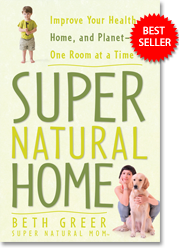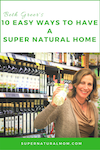It’s not so simple to buy eggs anymore. Choices abound, from organic, cage-free, farm-raised, free-range, omega-3, biodynamic, local, pastured, fertilized, vegetarian, and natural, to the other end of the spectrum – irradiated. Then there’s shell color: white, brown, speckled, and if you’re lucky enough to find them, blue. What’s an omelet-eating, soufflé-making, frittata-loving, eggs-over-medium person to choose?
According to the USDA, all eggs are “natural.” The term “cage-free” is a misnomer. It only means the chickens are not put in small cages but instead are put into big enclosures with no outdoor access. “Free-range” and “free roaming” means the chickens have access to the outdoors. But, here’s the U.S. Department of Agriculture’s definition of these terms (in its entirety): “Producers must demonstrate to the Agency that the poultry has been allowed access to the outside.” In other words, there has to be a door, and it has to be open at least part of the time.
“Organic” means hens ate organic feed, and were not given antibiotics. Typically, they too, are raised in confinement. The same is true for chickens fed vegetarian feed. Most supermarket eggs are produced on what is known as factory “farms” with sometimes close to 500,000 birds in one facility. The birds are caged in buildings that are artificially lighted and ventilated. The feed is generally a mixture of conventionally grown (sometimes genetically modified) corn and soy, and often laced with antibiotics.
Many commercial egg producers add synthetic colorants to their feed to mimic the bright yellow yolks of eggs from pastured hens. A widely used additive called canthaxantin has been shown to cause damage to the retina of the eye in humans, according to the European Union. Farmed-raised salmon are also fed canthaxantin to add color to their flesh. Due to public pressure, labels on farmed Atlantic salmon must now include the words “artificially colored” or “color added,” on their labels. However, no such label appears on conventional egg cartons.
Eggs from chickens raised on pasture (not pasteurized!) seem to be the healthier choice. They are different from supermarket eggs, both in flavor and nutrition. The chickens are not de-beaked like most commercial layers, and they have access to grass and insects. Studies show that their eggs are higher in omega-3 fatty acids, vitamin E, and vitamin A and are lower in total fat, saturated fat, and cholesterol. The eggs are usually laid just days before you get them and are rich-tasting with beautiful bright orange yolks (what the birds eat determines the yolk color).A new report reveals that eggs from these hens are higher in lutein and zeaxanthin than eggs from chickens raised in confinement. These are natural substances similar to beta-carotene that protect your eyes from cataracts and macular degeneration. They may also protect against cancer and cardiovascular disease.
In its desire to protect consumers from salmonella bacteria, the government recently passed a law saying it’s safe to irradiate eggs. But studies show that irradiated eggs are lower in vitamin A and niacin — FDA officials admit that eggs lose 24 percent of their vitamin A when exposed to just one-third the level of radiation the agency approved. The risk of eating a tainted egg is actually low if you look at the 2002 study by the U.S. Department of Agriculture. It showed that of the 69 billion eggs produced annually, 2.3 million of them were contaminated with salmonella. According to Mercola.com, if you are purchasing your eggs from healthy chickens this infection risk reduces dramatically because only sick chickens lay salmonella-contaminated eggs. If you are obtaining high quality organically fed, pasture-fed eggs, the risk virtually disappears.
Most of the premium or “natural” eggs in your supermarket are not from chickens raised on pasture, so where can you find them? At your local farmer’s market and from producers listed on the website Eatwild.com. How can you know whether the eggs you are about to buy are fresh and have come from healthy chickens, or are old and have come from poorly fed, stressed birds? The only way to know is to look closely and ask questions.
Here are some tips from the Weston A. Price Foundation: The shells should be dull, not shiny. The eggs should feel strong, not so delicate that regular handling threatens to crack them. Once you get them home you can perform two more freshness tests: Place them in a large bowl of cold water; if they float, they are old. Unshelled onto a plate, the yolk of a truly fresh egg will dome up and stay up, and the white will clearly be thicker in the middle part, thinner on the edges. Mercola.com advises that to properly judge the freshness of an egg, it needs to be at room temperature, then check it by rolling it across a flat surface. Only consume it if it rolls wobbly. Also, if there is a crack in the shell, don’t eat it.
On a recent trip to the San Rafael Farmer’s Market near San Francisco, I bought a lovely dozen with colors ranging from pale to deep brown, and some blue ones from Araucana chickens. (The breed determines the shell color.) You can find them from several vendors with prices that range from $3.50 to $8 a dozen (gulp!) but know you are getting a nutritionally superior egg with a rich taste, as well as a more ethically produced food. Personally, I’d rather eat eggs from chickens that are not caged. I prefer locally grown produce, both for environmental reasons and to support our local farmers.


